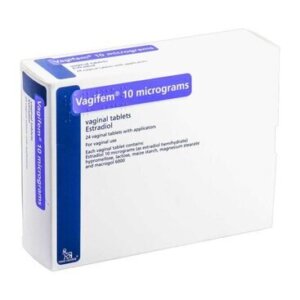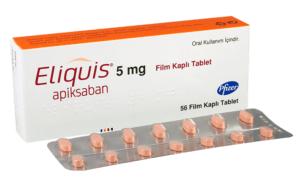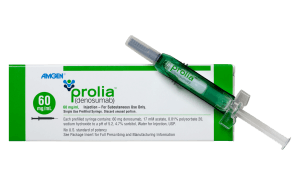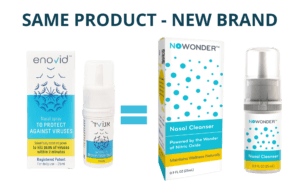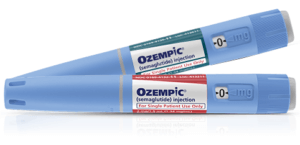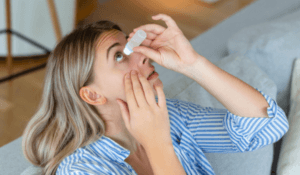
The main reason for increased discomfort in summer is a drop in humidity. It causes more evaporation of tears from the cornea, which is the most sensitive part of the eye. Without the lubrication the tear layers provide, eyes can become more vulnerable to infection and inflammation.
Some other summer features can make the incidence of DED more frequent and the effects worse. Airborne irritants abound in late spring. Air conditioning works hard to remove moisture from the circulated air indoors, making it extremely dry and cold, accelerating the tear evaporation rate.
This is not to say that summer is the only time of year in which dry eyes can be a problem. In the same way that super-efficient air conditioning creates cold and dry air that quickly removes tear layers, cold winter weather can strip moisture off exposed surfaces like the cornea in just a few seconds. Add to that the abundance of pollen and dust mites in spring, and it’s clear why Dry Eye Syndrome can be a year-round condition for so many millions of people.
What are tears made of, and where do they come from?
The purpose of tears is primarily to keep the front of the eyeball moist and clear of small particles. The cornea, the clear circle in front of the iris and pupil, is one of the most sensitive areas in the whole body, and it needs an adequate supply of moisture supplied from the tears to maintain its structure, since unlike other parts of the body, it has no internal blood supply. The action of blinking spreads fresh tears over the cornea and sweeps away any particles that could interfere with vision. Any interference with the supply of tears can result in discomfort and even irreparable damage to the cornea, leading to blindness. This is what makes treating dry eyes such an important function.
Tears are not just water, but instead combine water, oils (lipids), and minerals (sodium, potassium, and calcium) with special proteins into a three-layer film. The middle (aqueous) layer is clear water with dissolved minerals and proteins. It is secreted by the lacrimal glands above the eye through the tear ducts. The meibomian glands lie at the base of the eyelashes, and their function is to cover the aqueous layer with a coating of oils to control the evaporation rate. Specialized cells inside the eyelids and on the whites of the eyes (sclera) produce the inner layer of the tears, made up of glycoproteins, which help the film to spread evenly over the exposed surface of the eye, most importantly over the cornea, which has great sensitivity to touch.
What are the primary signs and symptoms of keratoconjunctivitis?
The main symptoms and signs of DED are:
- A feeling of dryness resulting in frequent blinking
- A feeling of grittiness when blinking
- Irritation of the sclera (white portion of the eye surrounding the iris)
- Discharge when asleep, producing a stringy mucus on the lids
- Stinging, burning or scratching sensations when blinking
- Sensitivity to light or difficulty driving at night
- Red eyes
- Difficulty wearing contact lenses
- Watery eyes
- Blurred vision
- Eye fatigue
The main causes of Dry Eye Syndrome
External environmental factors such as temperature and humidity of the surrounding air can cause rapid evaporation of the tear film coating the eye. Also, there may be some defects in the volume and quality of tears that form the liquid film coating the front of the eye, in the meibomian glands located in the eyelids, or in the channels (tear ducts) that deliver the tears from above the eyeball. Some of the causes of this are:
- Hormonal changes during perimenopause, which can affect the ability of the meibomian and lacrimal glands to function properly, altering the composition and stability of the tear film.
- Long-term use of contact lenses, which can irritate the eye and alter tear film stability, partly due to increased tear evaporation and mechanical disruption of the tear film.
- Sjögren’s syndrome is one of the most common conditions causing DED due to its effects on the moisture-producing salivary and lacrimal glands. It is an autoimmune disease that produces other symptoms, including dryness in the mouth.
- Connective tissue diseases like rheumatoid arthritis and lupus. These have an inflammatory effect on parts of the body. They can impact the lacrimal gland, producing atrophy.
- Conditions such as blepharitis or meibomian gland dysfunction (MGD). They can lead to a condition known as lipid layer dysfunction. The lipid layer is the outermost layer of the tear film, and its primary function is to control the rate of evaporation from the aqueous layer that lies immediately underneath it in the three-layer tear film. Where there are deficiencies in the lipid layer, it can cause increases in tear evaporation and will reduce tear film stability.
- Vitamin A deficiency, conjunctivitis, or chemical burns. These can alter the cornea’s surface, making it much more sensitive to the smallest loss of tear film quantity or quality.
- Extensive use of screens such as computers, tablets, and smartphones. They are often accompanied by a reduced blinking rate. This can result in instability of the tear film, leading to its breakdown. It can also be made worse because people who work for long periods in low light staring at a bright screen often develop the habit of rubbing their eyes, which reduces the quality of tears.
- Rarely, tumors can grow around the lacrimal glands or tear ducts, which can dramatically affect the volume of tears reaching the front of the eye. Other conditions specifically related to the lacrimal glands include infections (dacryoadenitis).
- Aging is a common cause of dry eyes due to the natural decline in glands’ functionality.
Taking steps to prevent Dry Eye Syndrome
Anyone who experiences persistent symptoms of Dry Eye Syndrome that can’t be attributed to the environmental cause we identified – extremely dry air – should seek help from an experienced healthcare provider. If it looks like the environment is the cause, some sensible and simple steps can be taken. People who have to work outdoors in extreme weather conditions, both biting cold and scorching heat, can wear goggles or wrap-around sunglasses for at least part of the time so that their eyes get a rest.
Over-the-counter tear supplements (variously known as liquid tears or artificial tears) are available from most pharmacists. It is important to begin treating DED as soon as the symptoms start to be felt and before any damage can be caused to the cornea. Usually, liquid tears can be used as frequently as required during the day, and most people prefer to apply ointment only at night immediately before going to sleep. This is because vision becomes affected as the ointment smears itself over the front of the eye.
Diseases that affect the meibomian glands (meibomian gland dysfunction or blepharitis) can be self-treated with simple home remedies, such as bathing the eye in a warm compress with water mixed with bicarbonate of soda using cotton wool or sterile pads.
Treatments for Dry Eye Syndrome
There are no cures for Dry Eye Syndrome.
- In cases where there is a direct cause, such as Sjögren’s syndrome, rheumatoid arthritis or lupus, even those therapies only slow down the progress of the disease or reduce the symptoms. These will usually require treatment by a panel of doctors, including rheumatologists and primary care providers.
- When blepharitis doesn’t respond to simple home remedies within a reasonable time, doctors sometimes prescribe general antibiotic solutions or creams applied to the lid margins.
- Restasis (generic name: cyclosporine ophthalmic solution 0.5%) can be prescribed when patients show reduced ability to produce tears due to eye inflammation. There will, however, be no increase in tear production while anti-inflammatory medicines are being taken.
- Xiidra (generic name: lifitegrast) is an eye drop used to treat the symptoms of dry eyes. It works by blocking the interaction between two types of proteins that can cause inflammation.
- Cequa (generic name: cyclosporine ophthalmic solution 0.09%) was approved in 2023 and was the first new drug the FDA has approved specifically treating Dry Eye Syndrome for over a decade. It will increase tear production for patients suffering from dry eye syndrome (keratoconjunctivitis sicca).





